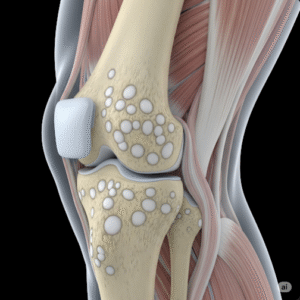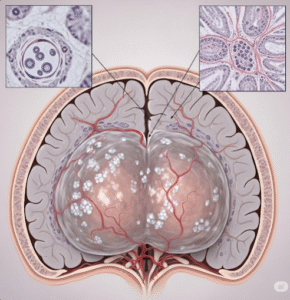Overview
Junctional Escape Rhythm (JER) is a type of cardiac arrhythmia in which the atrioventricular (AV) junction becomes the heart’s pacemaker when the sinoatrial (SA) node is not functioning adequately. This rhythm acts as a protective mechanism to maintain cardiac output. In Korea, JER is commonly identified during evaluations for bradycardia, fainting, or palpitations, and modern cardiology centers provide comprehensive diagnostic and treatment options.
What is Junctional Escape Rhythm?
Junctional Escape Rhythm occurs when the AV node or His-Purkinje system generates electrical impulses to maintain a heartbeat, usually at 40–60 beats per minute. It is characterized by absent or inverted P waves on the ECG, with a normally narrow QRS complex. JER serves as a safety mechanism, ensuring the heart continues to beat when the SA node slows or fails.
Symptoms
- Slow heart rate (bradycardia)
- Dizziness or lightheadedness
- Fatigue
- Fainting episodes (syncope)
- Palpitations
- Chest discomfort
Causes
- Sick Sinus Syndrome
- Atrioventricular (AV) block
- Electrolyte imbalances such as high potassium levels
- Medications like beta-blockers or digoxin
- Ischemic heart disease
- Infiltrative conditions affecting the heart, e.g., amyloidosis
Risk Factors
- Advanced age
- Chronic heart conditions such as coronary artery disease
- Use of medications affecting heart rate
- Electrolyte disturbances
- History of cardiac surgeries
Complications
- Progression to complete heart block
- Symptomatic bradycardia requiring pacemaker implantation
- Increased risk of other arrhythmias
- Reduced exercise tolerance
Prevention
- Regular heart health monitoring
- Proper management of underlying conditions like hypertension or diabetes
- Avoidance of medications that may worsen bradycardia
- Maintaining electrolyte balance
- Lifestyle modifications, including a balanced diet and regular physical activity
Treatment Options in Korea
South Korea provides advanced diagnostic and treatment options for JER:
- Diagnosis: Electrocardiogram (ECG) is the primary tool for identifying JER. Major hospitals like Seoul National University Hospital and Asan Medical Center provide comprehensive cardiac evaluations.
- Medical Management: Adjusting medications that contribute to bradycardia and using intravenous atropine in acute situations to temporarily increase heart rate.
- Pacemaker Therapy: Permanent pacemaker implantation is recommended for patients with symptomatic bradycardia. Leading centers such as Samsung Medical Center are equipped with modern electrophysiology labs for these procedures.
- Electrophysiological Studies and Ablation: In cases of recurrent arrhythmias, specialized studies followed by catheter ablation are available at centers like Severance Hospital.
- Rehabilitation and Follow-Up Care: Cardiac rehabilitation programs and regular follow-up visits help manage symptoms and monitor heart rhythm. These services are widely accessible across major hospitals in Korea.













